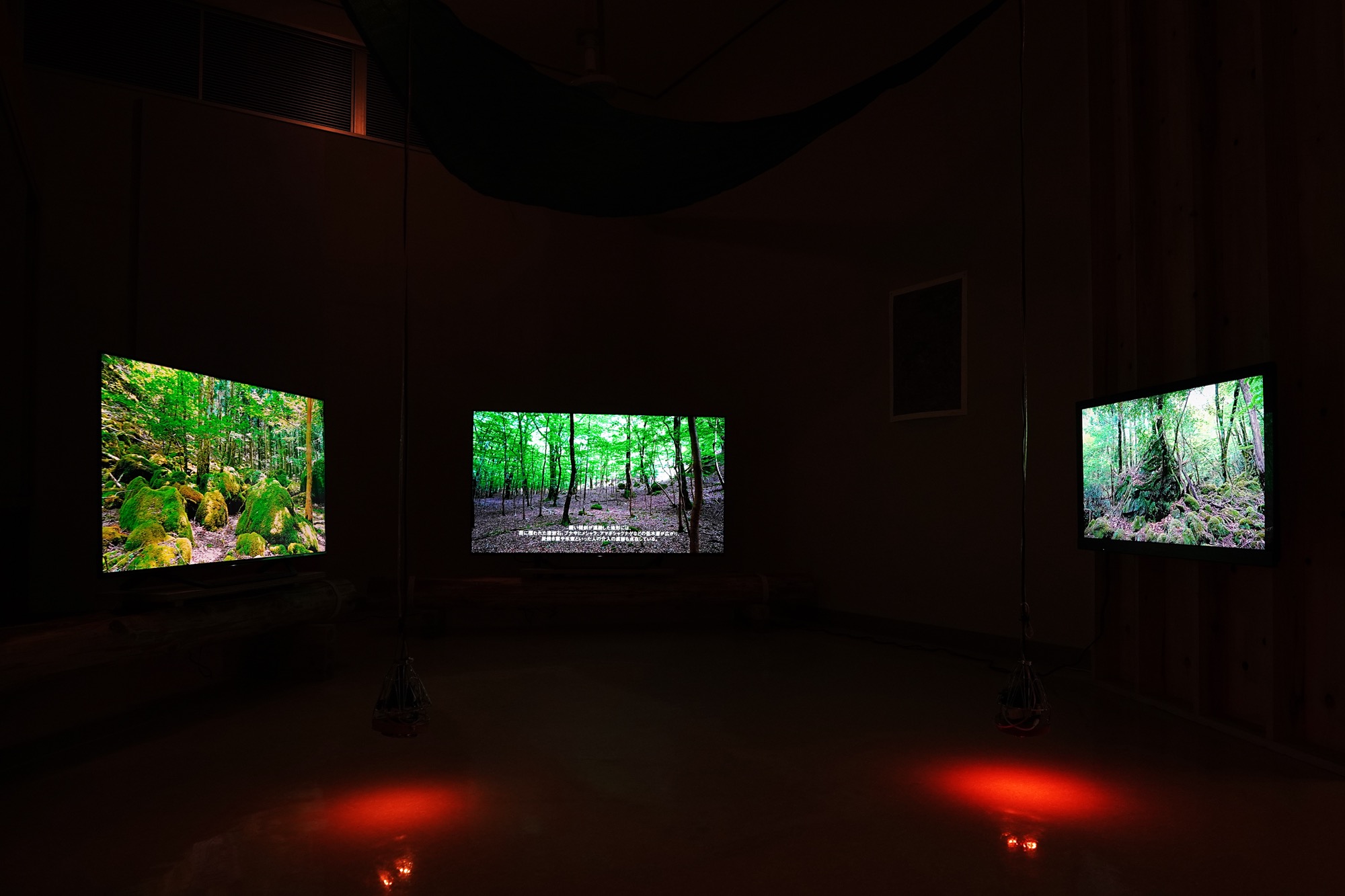
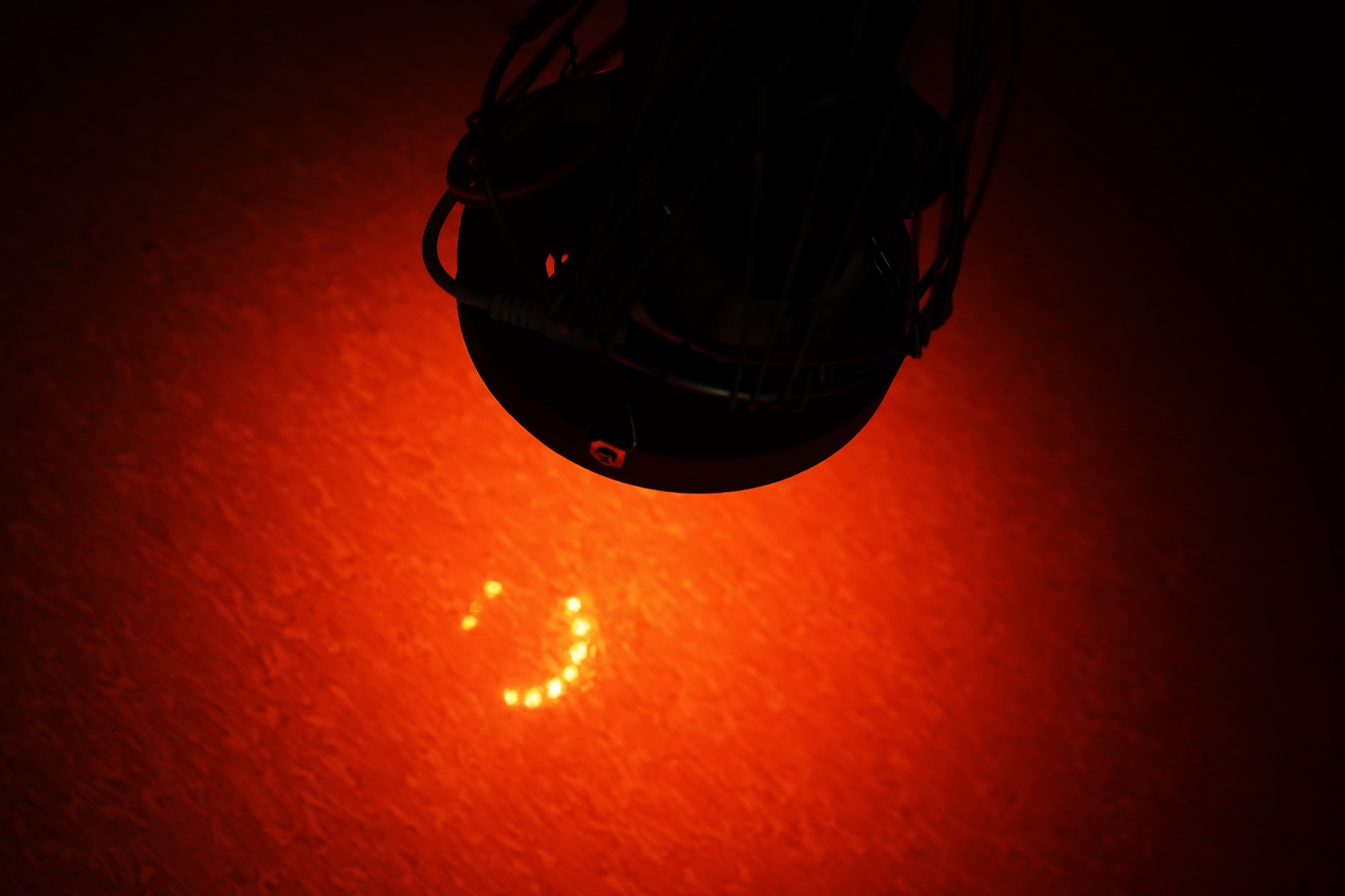

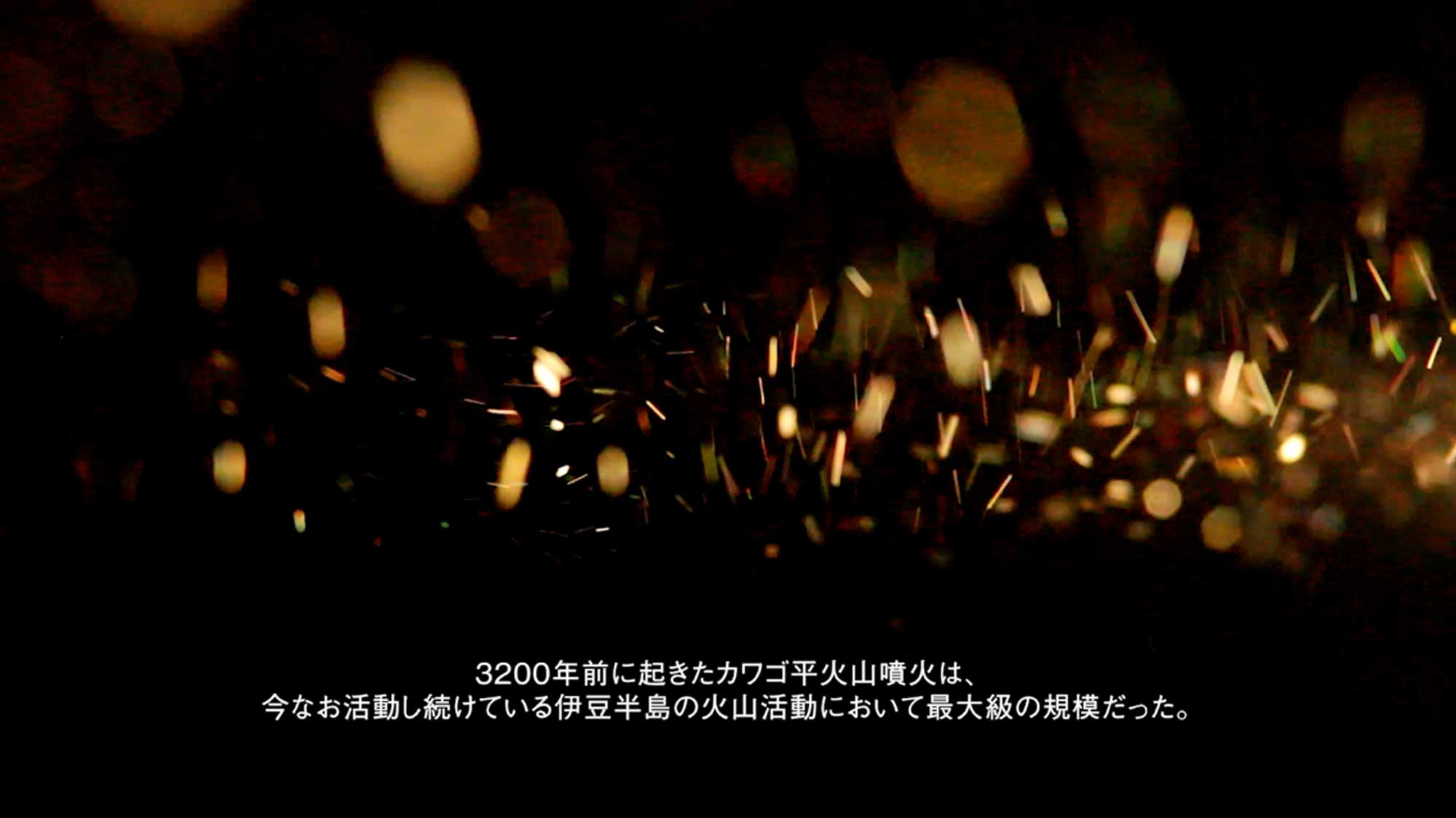
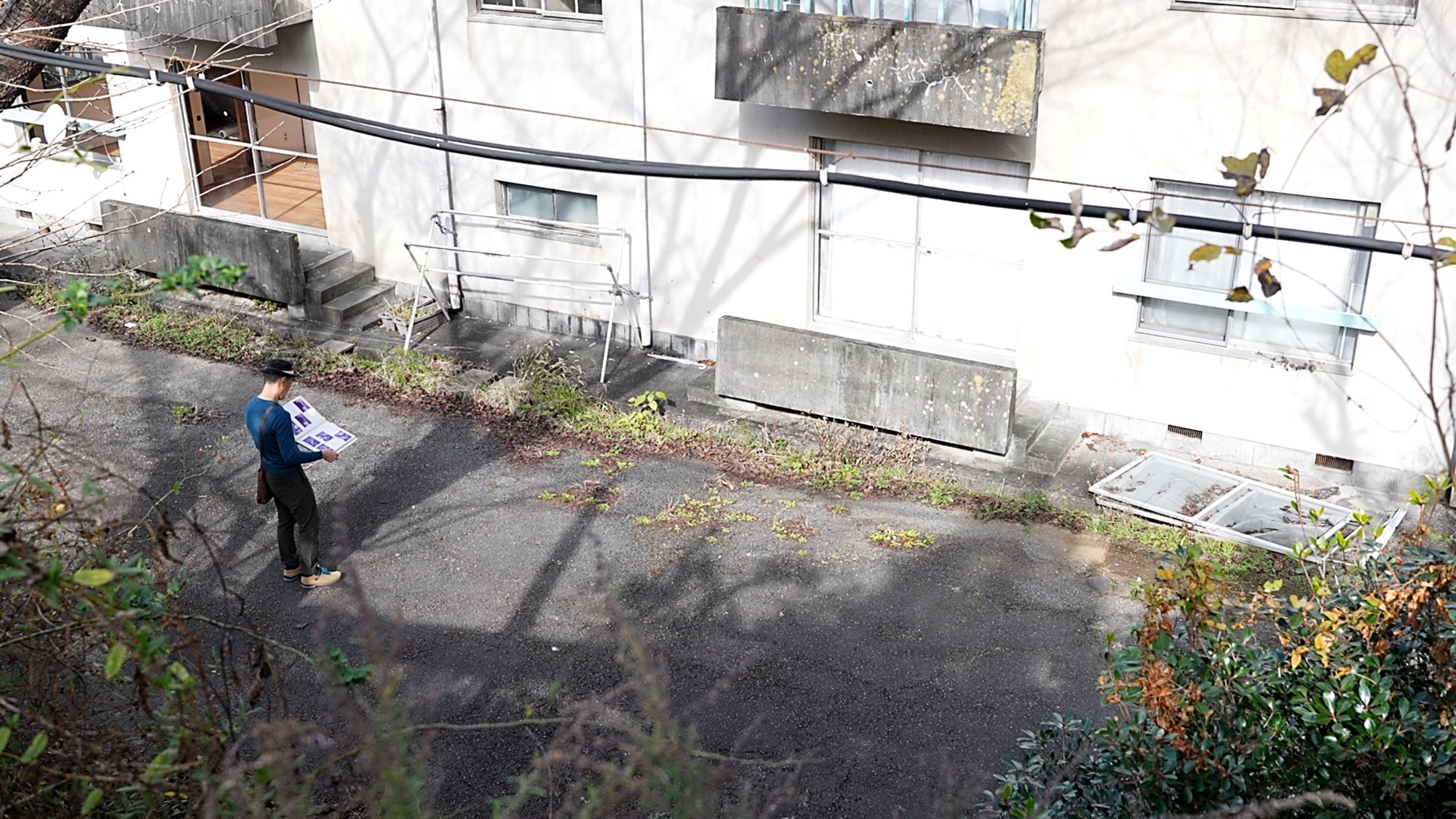
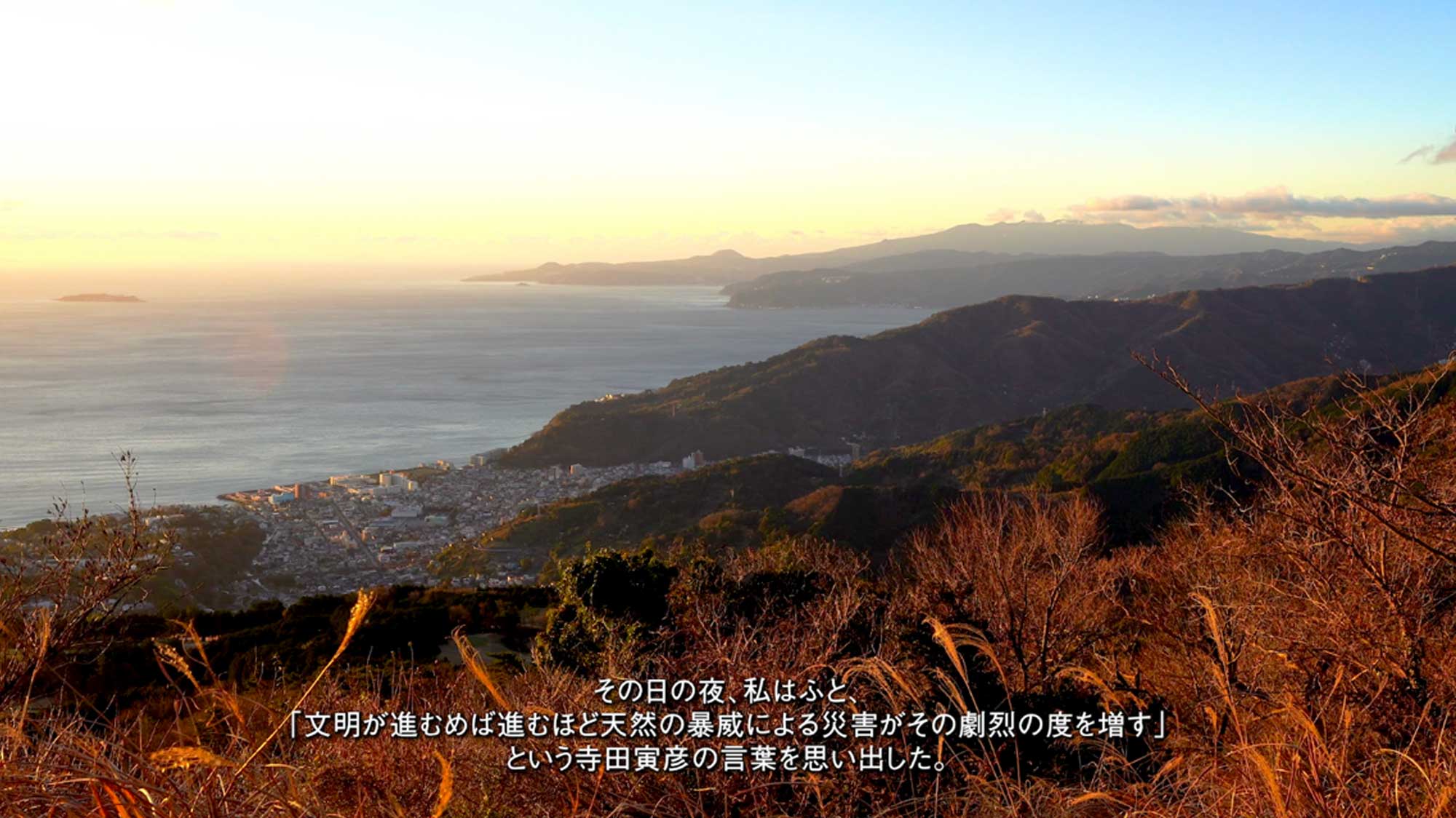
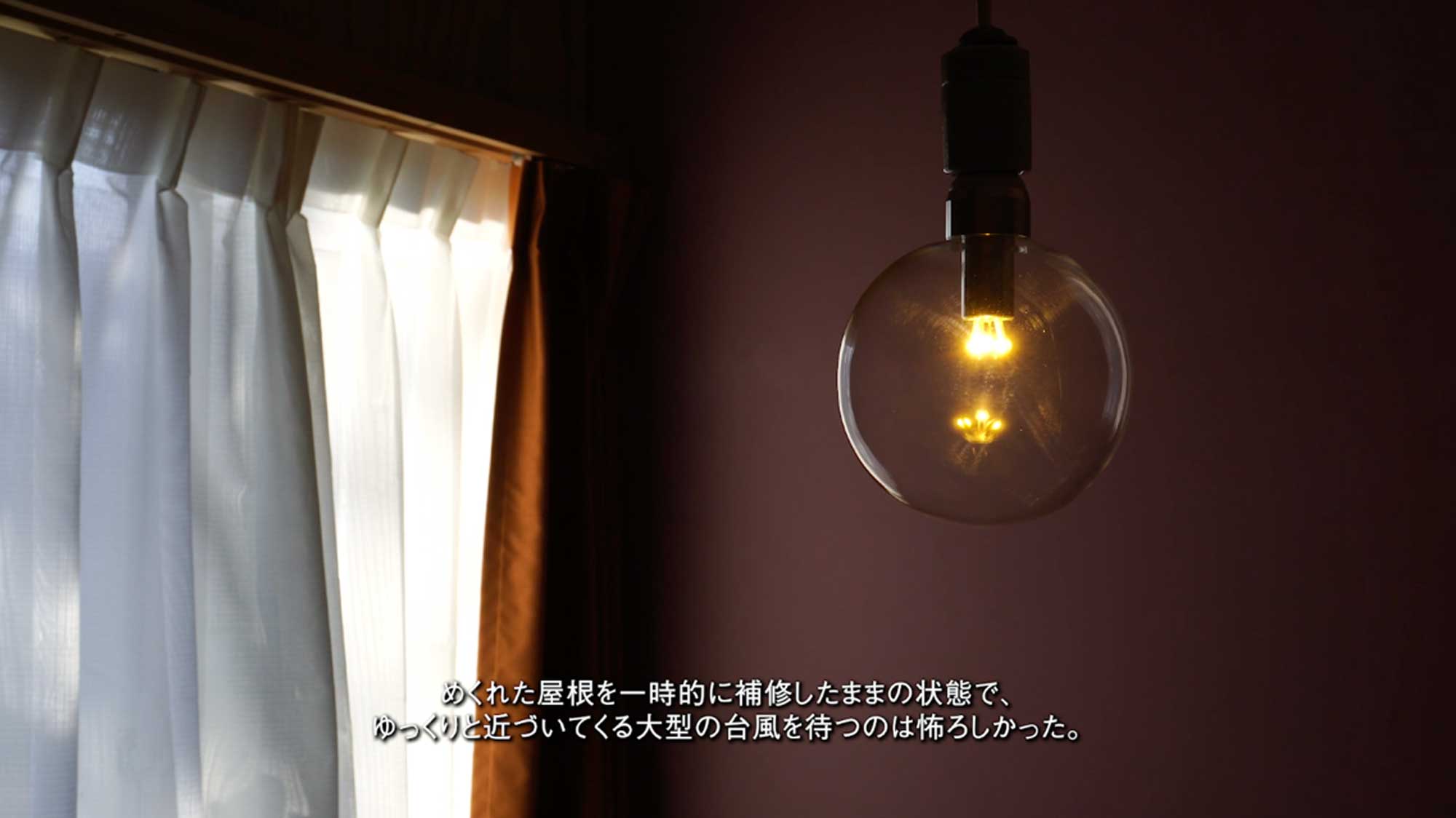

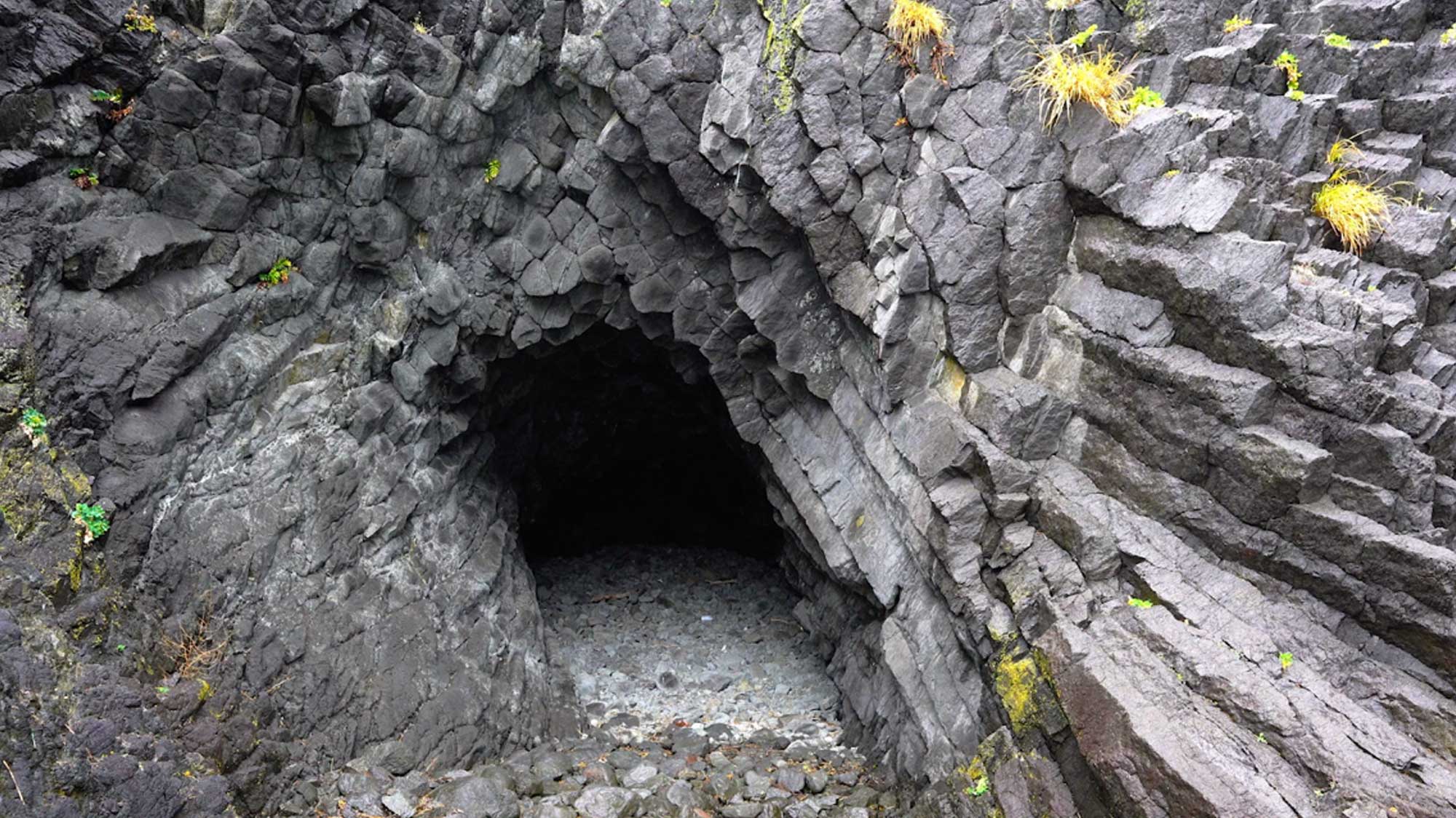
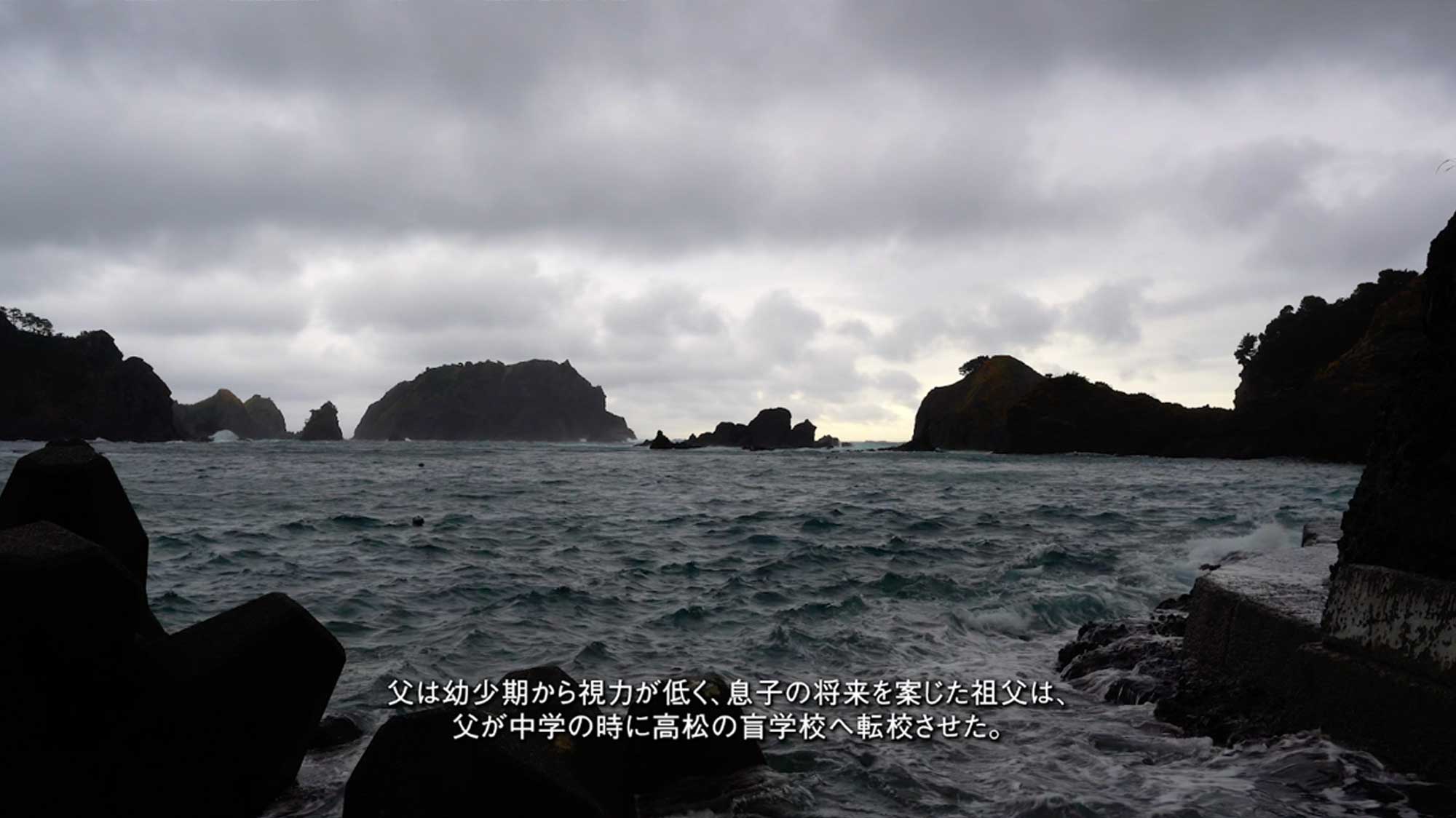
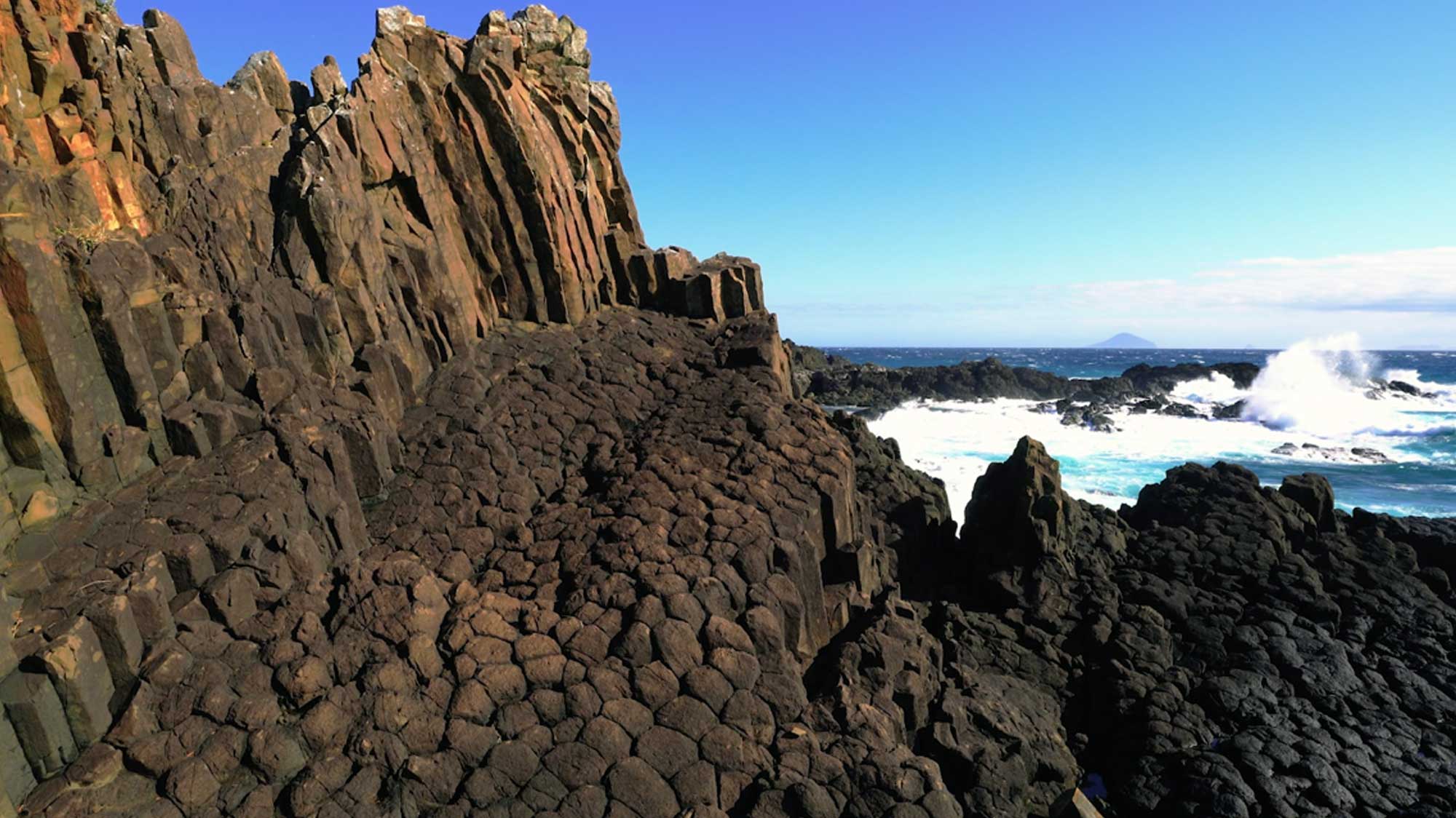
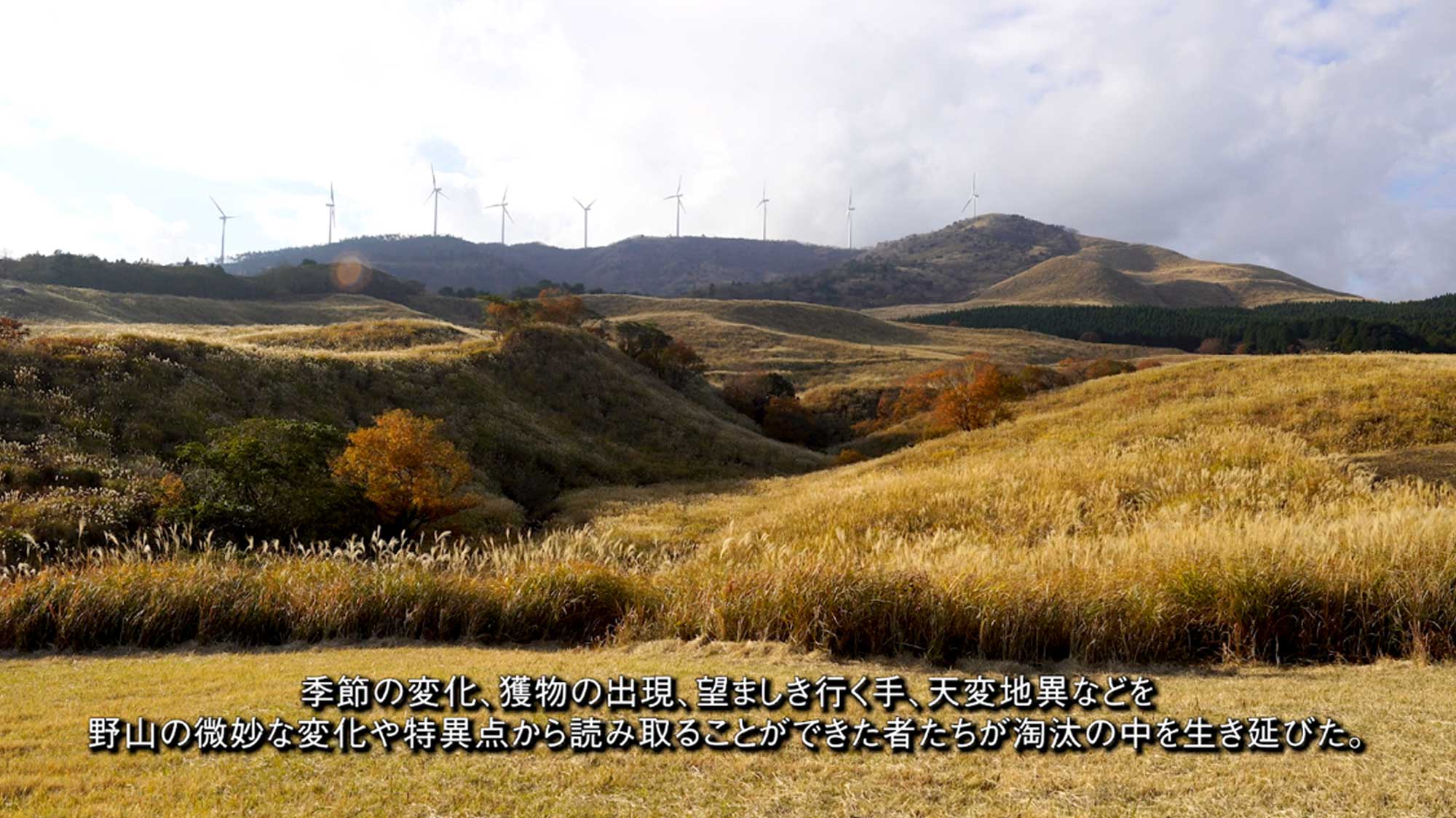
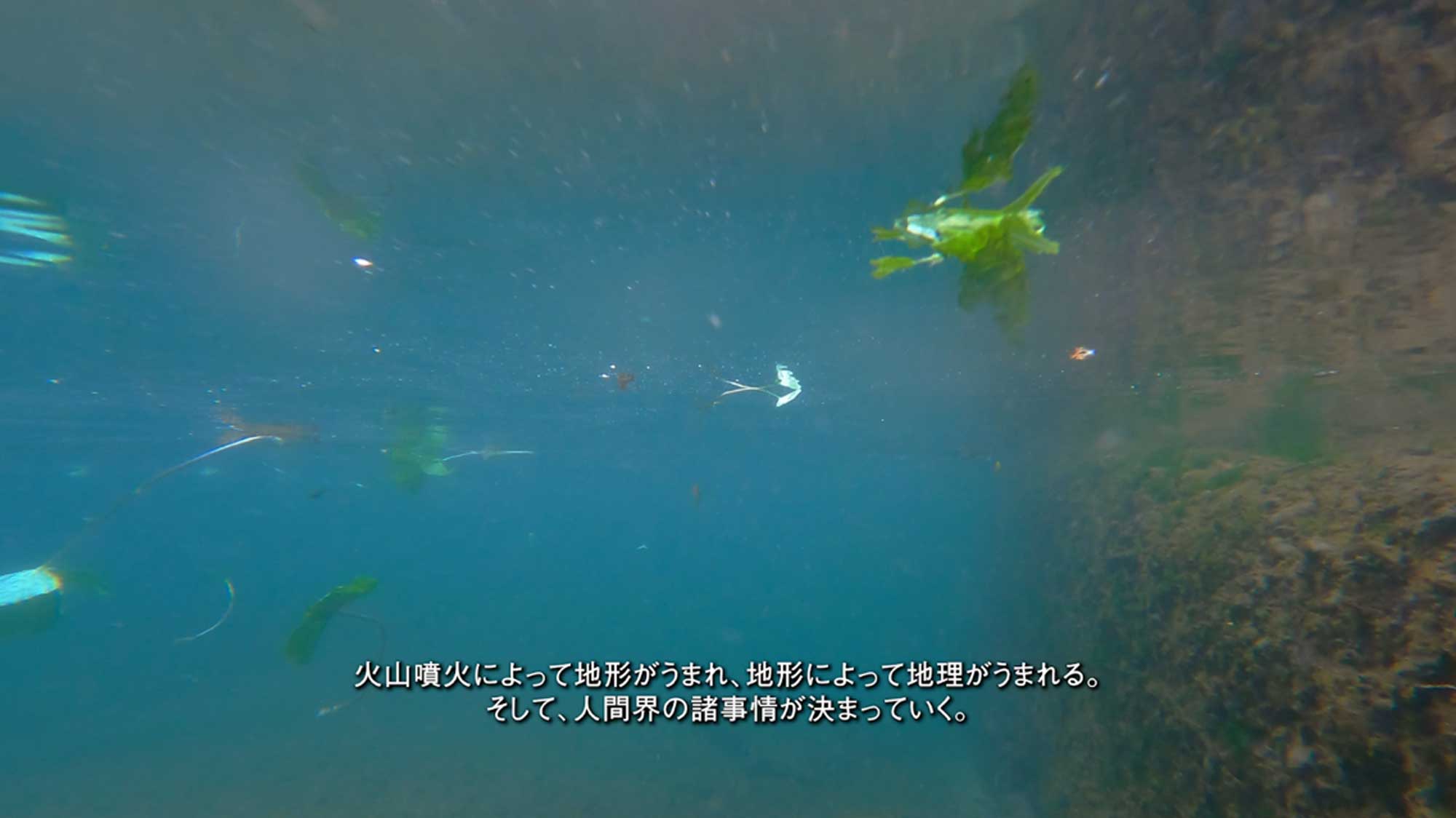
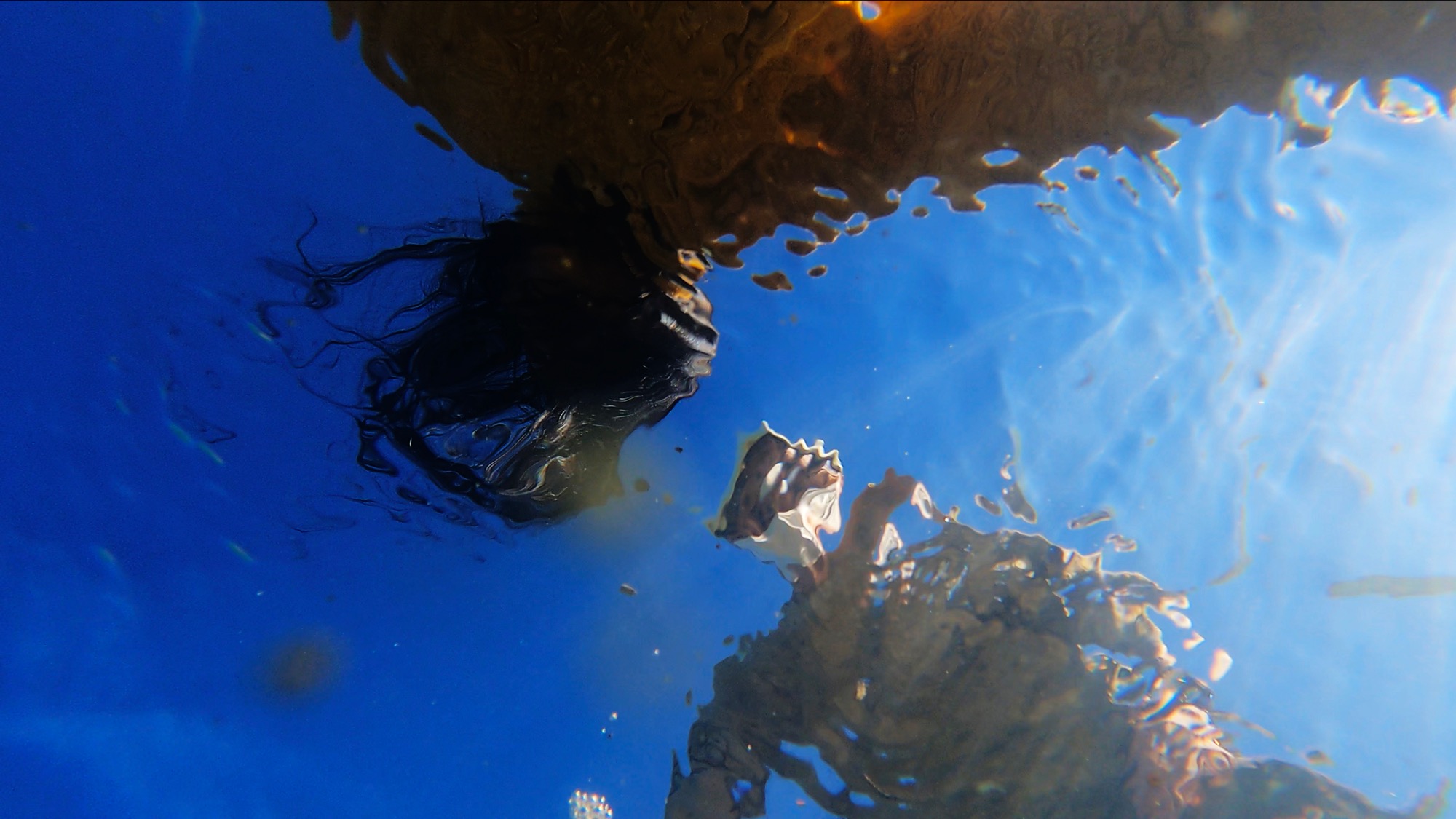
a trace of strata
Video installation
3ch 4K・HD video(26min), Stereo, Sound sensor, LED, Speaker
Variable size
2021
ビデオ インスタレーション
3ch 4K・HDビデオ(26分)、ステレオ、音センサーLED、スピーカー
サイズ可変
2021年
The Izu Peninsula demonstrates geological activity that is among the most complex in the Japanese archipelago, itself at one of the world's most active zones of diastrophism. Unlike the two tectonic platess that broadly divide Japan into southwestern and the northeastern parts, the Philippine Sea Plate on which the Izu Peninsula rests moves slowly to the north while subducting.
The Kawagodaira eruption that occurred 3,200 years ago marked one of the largest volcanic eruptions to ever occur on the Izu Peninsula. With a unique appearance formed by the pyroclastic flows, the terrain was hammered by torrential rain during Typhoon Ida in 1958, causing outflow of large volumes of earth and sand along with flooding of the Kano River. This catastrophic disaster was responsible for over a thousand deaths in the Izu region alone. The source of the Shiraiwa Onsen hot springs, a tourism resource in the town of Nakaizu, was also washed away and devastated in the Kano River flooding. The Shiraiwa Onsen springs were drilled and reopened in a reconstruction project, which helped attract the siting of the Nakaizu Spa Hospital.
The artist (Shimizu) learns that his father once work at the hospital, and, feeling the hands of fate in motion, travels about Izu.
The artist's own experiences with typhoons, his attitude toward nature through architecture (designing), the personal history told in his voice with insights concerning seeing, and the story of the geology of the Izu Peninsula (the traces of Izu's topographical formation from the era of submarine volcanoes to the collision with the Honshu main island, and from the era of large-scale onshore volcanoes to the Kawagodaira eruption) told in the voice of a woman (in English) gradually overlap to lay down strata.
世界有数の地殻変動地帯にある日本列島のなかでもとりわけ複雑な地質活動を示す伊豆半島。日本を西南部と東北部とに大きく分割している2つのプレートに対して、伊豆半島を載せたフィリピン海プレートは、いまもゆっくりと沈み込みながら北進を続けている。
3200年前に起きたカワゴ平噴火は、伊豆半島の火山活動において最大級の噴火であった。その火砕流が作り出した独特の見かけをした地形は、1958年の狩野川台風の際に集中豪雨に襲われ、大量の土砂が流出して狩野川が氾濫。伊豆地方だけで1,000人を超す死者を出す大災害となった。中伊豆町の観光資源であった白岩温泉の源泉も狩野川の氾濫により流失荒廃した。復興事業によって再湧出された白岩温泉は、中伊豆温泉病院の誘致に繋った。
作家(清水)は、父親がかつて中伊豆温泉病院に勤務していたことを知り、宿命的な巡り合わせを感じて伊豆の各地を巡る。
作家自らの台風被災の経験、建築することを通じた自然に対する姿勢、見ることについての洞察を交えた作家本人の声による個人史の語りと、女性の声(英語)による伊豆半島の地学的な物語(海底火山時代から本州との衝突、陸上大型火山時代からカワゴ平噴火までの伊豆の地形形成の痕跡)は、少しずつ重なりながら層を成していく。
---
構想・脚本・編集:清水玲
撮影:清水玲 磯村拓也
撮影協力:磯村拓也
リサーチ・脚本協力:伊藤允彦
音楽・作曲:木戸崇博 村田有希
ギター, チェロ, ハープ, グロッケンシュピール:木戸崇博
ピアノ, シンセサイザー:村田有希
ヴァイオリン, ヴィオラ:高原久美
パーカッション:吉川忠志
レコーディング:木戸崇博, 村田有希
ミキシング, マスタリング:木戸崇博
ナレーション(日本語):清水玲
ナレーション(英語):May(Hi VOICE)
Special Thanks:
Cliff Edge Project
松本圭司
清水光芳
清水美津
Related URL:https://cliff-edge.org/2020/